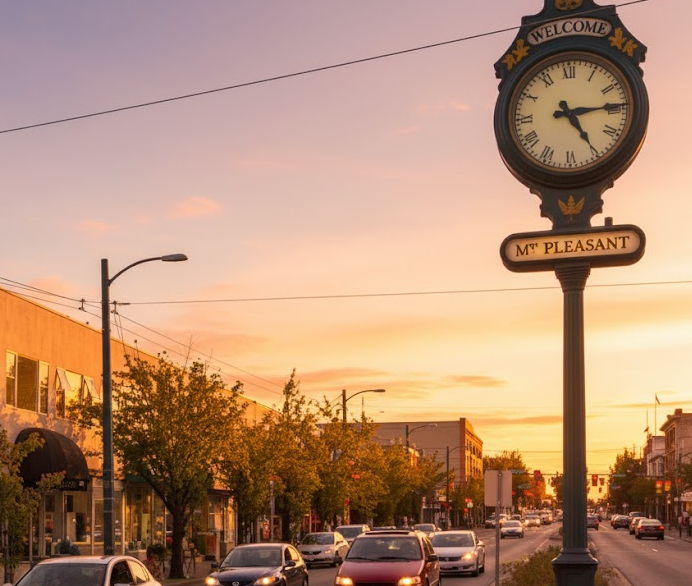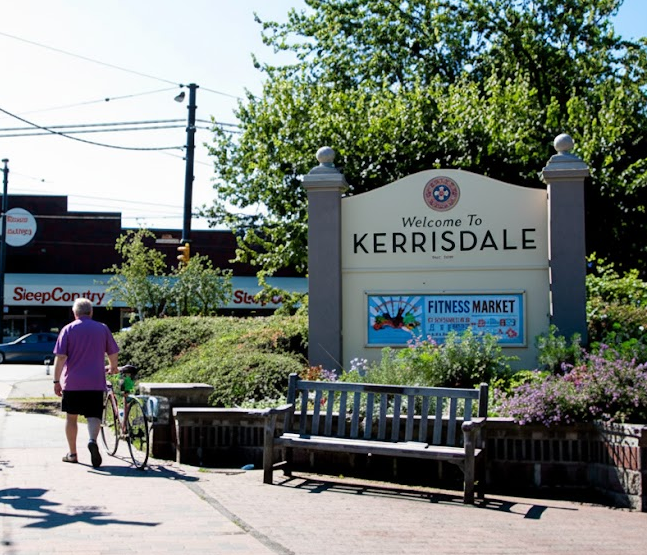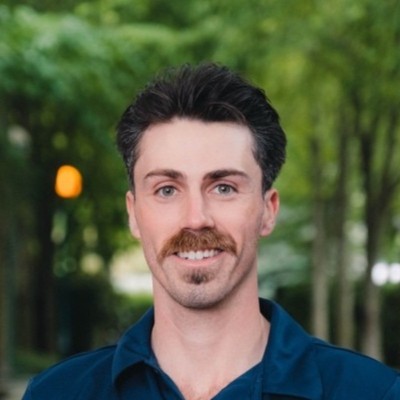Why Vancouver Homes Need Soft Washing: Moss, Mold and Moisture Solutions

When I suggested soft washing instead of repainting for Dan's North Shore home, he was skeptical. His house hadn't seen much sunlight in 10 years, and quotes for repainting ranged into the tens of thousands. After we carefully prepped his property and soft washed every surface—from siding and railings to wooden steps—the transformation was incredible. His home looked almost brand new, and he saved between $30,000 and $40,000.
Dan's story isn't unique in Vancouver. Our city's climate creates perfect conditions for moss and mold growth that can make homes look tired and neglected. With 2024 being Vancouver's wettest year this century, recording more than 1,367 millimetres of precipitation (Canada Construct Connect, 2025), homeowners are facing increased challenges with exterior deterioration. Through my three years developing soft washing techniques specifically for Vancouver's conditions, I've learned that many property owners don't realize they don't need costly repaints or risky pressure washing—a proper soft wash can completely transform and restore their property while protecting delicate surfaces from damage.
TL;DR
• Vancouver's extreme moisture creates ideal mold conditions: The city averages 2,282mm annual precipitation, with November alone receiving 344mm across 20 rainy days (Weather and Climate, 2024), while North Shore areas get additional rainfall due to elevation effects.
• Soft washing eliminates growth at the source: Unlike pressure washing (1,300-4,000 PSI) that can damage surfaces, soft washing uses low-pressure water (150-300 PSI) with cleaning solutions that kill mold and moss root systems (Pumptec, 2024).
• Atmospheric rivers are intensifying the problem: Recent events dumped up to 300mm of rain in 2-3 days, with Vancouver receiving 150mm during October 2024's atmospheric river (NASA Earth Observatory, 2024).
• Prevention saves thousands in repainting costs: Proper soft washing can restore homes to near-new condition and prevent the need for expensive repainting, as demonstrated by savings of $30,000-$40,000 on North Shore properties.
• Mold grows rapidly in Vancouver's conditions: Health Canada recommends keeping humidity below 60% to prevent mold growth (Health Canada, 2024), but Vancouver's climate consistently exceeds these thresholds outdoors.
Vancouver's Unique Climate Creates Perfect Conditions for Moss and Mold
Vancouver's climate presents unique challenges that make moss and mold growth nearly inevitable on home exteriors. The city averages 2,282mm of annual precipitation, with November alone receiving 344mm distributed across 20 rainy days (Weather and Climate, 2024). This consistent moisture creates the perfect breeding ground for organic growth that can quickly deteriorate your home's appearance and structural integrity.
During my five years of gutter cleaning throughout Vancouver, I've witnessed firsthand how this moisture affects different neighbourhoods. The combination of limited sunlight and constant dampness creates conditions where moss and mold thrive, particularly on north-facing surfaces and areas with poor drainage.
How Atmospheric Rivers Impact Vancouver Homes
The recent increase in atmospheric river events has made moisture problems even worse for Vancouver homeowners. In October 2024, one atmospheric river event dumped up to 300 millimeters of rain on southern Vancouver Island and 150 millimeters on the Vancouver metropolitan area in just 2-3 days (NASA Earth Observatory, 2024). West Vancouver alone received about 190 millimetres during this event, prompting North Vancouver to declare a state of local emergency (CBC News, 2024).
These intense rainfall events don't just cause immediate flooding—they saturate building materials and create long-lasting moisture conditions that encourage mold and moss growth for months afterward. I've seen properties that looked clean before an atmospheric river become covered in green growth within weeks of these events.
Why the North Shore Gets Hit Hardest
The North Shore faces particularly challenging conditions due to elevation effects. There's a rule of thumb that for every 100 meters of elevation gain, there's an additional 100mm of precipitation annually (Wikipedia, 2025). This means North Shore properties like Dan's receive significantly more moisture than downtown Vancouver homes.
Dan's property exemplified this challenge perfectly. Located in an area with limited sunlight and elevated moisture exposure, his home's exterior had deteriorated significantly over 10 years. The combination of consistent dampness and poor air circulation had created ideal conditions for moss and mold that traditional cleaning methods couldn't address effectively.
The Science Behind Mold and Moss Growth in Vancouver
Understanding why mold and moss grow so aggressively in Vancouver requires looking at the specific conditions these organisms need to thrive. Health Canada recommends maintaining indoor humidity levels between 30% and 50%, noting that mold growth typically begins when relative humidity exceeds 60% (Health Canada, 2024).
Vancouver's exterior surfaces routinely exceed these thresholds, especially during our extended rainy seasons. Research shows that mold can be detected under less restrictive conditions when environments have poor ventilation and relative air humidity from 65% (ScienceDirect, 2018).
Humidity Thresholds That Trigger Growth
The EPA states that if wet or damp materials aren't dried within 24-48 hours after water exposure, mold will likely begin growing (EPA, 2025). In Vancouver's climate, exterior surfaces rarely get 48 continuous hours without moisture exposure, especially from October through April.
During my gutter cleaning work, I've observed how moisture behaves differently on various surfaces. Areas with poor drainage or limited air circulation stay damp much longer, creating microclimates where mold and moss establish root systems that become increasingly difficult to remove with traditional methods.
Why Traditional Cleaning Methods Fall Short
My experience with recurring cleaning issues taught me why surface-level approaches fail in Vancouver's climate. I once worked with a client who had their gutters cleaned every three months by other companies, but water still overflowed during heavy rains. The problem wasn't visible debris—it was a deep clog in the downspout neck that previous cleaners had missed.
This same principle applies to mold and moss removal. Pressure washing might remove visible growth, but it doesn't eliminate the root systems that allow rapid regrowth. Without addressing the underlying organism structure, homeowners find themselves in expensive cleaning cycles that never provide lasting results.
How Soft Washing Eliminates Moss and Mold at the Source
After spending about a year researching and experimenting before building my first soft wash system, I learned that Vancouver's conditions require a fundamentally different approach than high-pressure cleaning. Soft washing combines low-pressure water (typically 150-300 PSI) with specialized cleaning solutions, compared to pressure washing's aggressive 1,300-4,000 PSI approach (Pumptec, 2024).
The key difference isn't just pressure—it's the chemical treatment that kills mold and moss at the root level. This approach provides longer-lasting results because the cleaning solutions eliminate the organisms entirely, preventing rapid regrowth (Elite Jetting, 2024).
The Soft Washing Process for Vancouver Conditions
For Dan's North Shore project, we began with careful preparation that's essential for Vancouver properties. We covered keyholes, protected landscaping, and ensured no chemical conflicts with existing materials. This attention to detail prevents the damage that can occur when moisture is forced into areas where it doesn't belong.
The soft washing process involves applying cleaning solutions that penetrate moss and mold growth, breaking down the organic matter from within. After allowing proper dwell time for the chemicals to work, we rinse with low-pressure water that removes the dead organisms without damaging delicate surfaces like painted siding or cedar trim.
During Dan's project, this approach revealed hidden issues that pressure washing would have missed—including rotten wood concealed under moss growth. Rather than covering up problems, proper soft washing exposes maintenance needs that protect your long-term investment.
Why Pressure Washing Can Damage Vancouver Homes
High-pressure washing poses significant risks to Vancouver homes, especially older properties with cedar siding or painted surfaces. Pressure washing can strip paint, damage wood grain, and force water into areas where it causes long-term moisture problems (Evergreen Window Cleaning, 2024).
I've seen the damage that aggressive cleaning can cause. Water forced behind siding creates trapped moisture that leads to rot and mold growth in wall cavities. This is particularly problematic in Vancouver, where homes need to breathe and dry out between rain events.
My slightly controversial position in the industry is that soft washing can be superior even on surfaces where most companies typically pressure wash. It preserves surface integrity, prevents etching, and delivers results that last longer because it addresses the root cause rather than just symptoms.
Protecting Your Investment in Vancouver's Housing Market
Vancouver's real estate market makes exterior maintenance a significant financial consideration. When Dan was facing tens of thousands in repainting costs, soft washing provided an alternative that delivered comparable aesthetic results at a fraction of the cost.
When Soft Washing Can Replace Repainting
After 10 years of exterior deterioration, Dan's home looked tired and neglected. The moss and mold growth had created such discoloration that repainting seemed like the only solution. However, proper soft washing revealed that the underlying surfaces were in excellent condition—they just needed thorough cleaning.
The transformation was remarkable. We soft washed the siding, railings, wooden steps, and even the driveway. As an added safety measure for Dan and his wife, who are elderly, we installed non-slip treads on the wooden stairs. The total investment was a fraction of exterior painting costs, which typically range $7,500-$20,000 in Vancouver, while delivering results that looked almost like new construction.
During this project, we discovered rotten wood hidden under moss that would have been missed by painters. Instead of covering up the problem, I brought in a carpenter and painter to address the issue properly. This comprehensive approach ensured the home was fully restored rather than just cosmetically improved.
Preventing Structural Damage from Moisture
My carpentry background helps me understand how moisture affects building structure beyond just aesthetics. Moss and mold don't just create surface stains—they hold moisture against building materials, accelerating deterioration that can lead to expensive structural repairs.
Regular house washing with proper soft washing techniques creates a protective barrier against Vancouver's moisture challenges. By eliminating organic growth and treating surfaces to resist future colonization, homeowners can extend the life of their exterior materials significantly.
Choosing Professional Soft Washing in Vancouver
Not all cleaning services understand Vancouver's unique challenges or have developed techniques specifically for our climate conditions. My approach is built on hands-on experience rather than formal training, because there are no industry certifications that truly teach what I've learned through trial, error, and relentless learning in Vancouver's specific environment.
What to Look for in a Vancouver Soft Washing Service
Effective soft washing in Vancouver requires understanding local conditions, from atmospheric river preparation to working safely around the steep terrain and tight lot lines common in many neighbourhoods. Look for services that demonstrate knowledge of Vancouver-specific challenges and have invested time in developing appropriate techniques.
The right service provider should also understand the importance of environmental protection, especially given Vancouver's emphasis on sustainability. Proper chemical selection and application methods protect local waterways and vegetation while still delivering effective results.
As a Vancouver native committed to serving our local community, I've built my approach around understanding what works specifically in our climate. Every project refines my expertise further, allowing me to deliver consistent, safe, and high-quality results that address Vancouver homeowners' unique needs.
Conclusion
Vancouver's exceptional rainfall and humidity create ongoing challenges for homeowners, but they don't have to result in expensive repainting or structural damage. Through proper soft washing techniques developed specifically for our climate, properties can be restored to like-new condition while protecting long-term investment value.
The key is working with professionals who understand Vancouver's unique conditions and have invested in developing appropriate solutions. Whether you're facing moss-covered siding, mold-stained surfaces, or preparing for atmospheric river season, soft washing offers an effective, gentle alternative to aggressive pressure washing or costly repainting.
If you're ready to transform your home's exterior and protect your investment, contact us for a consultation tailored to Vancouver's specific challenges.
Frequently Asked Questions
Q: How often should Vancouver homes be soft washed?A: Given Vancouver's climate, most homes benefit from annual soft washing, with North Shore and heavily shaded properties potentially requiring service every 6-8 months. Timing before atmospheric river season (early fall) provides optimal protection.
Q: Is soft washing safe for Vancouver's older cedar siding?A: Yes, soft washing is ideal for cedar and other delicate materials common in Vancouver homes. The low pressure (150-300 PSI) prevents damage while the cleaning solutions effectively remove moss and mold without harming the wood.
Q: Can soft washing prevent damage from atmospheric rivers?A: While soft washing can't prevent flood damage, it removes organic growth that holds moisture against surfaces and weakens materials. Clean surfaces shed water more effectively and are less susceptible to moisture-related deterioration.
Q: How does soft washing compare to pressure washing for Vancouver homes?A: Soft washing is generally superior for Vancouver homes because it eliminates mold and moss at the root level, provides longer-lasting results, and prevents damage to delicate surfaces. Pressure washing may temporarily remove surface growth but often causes damage and allows rapid regrowth.
Q: What's the best time of year for soft washing in Vancouver?A: Late summer or early fall provides optimal timing, allowing homes to be cleaned and protected before the heavy rain season. This timing maximizes the protective benefits throughout Vancouver's wettest months.
Aidan Bar-Lev-Wise is the Founder and Owner of WashTech, a Vancouver-based company specializing in professional exterior property maintenance for residential and commercial clients across the Lower Mainland. With a reputation built on reliability, safety, and service excellence, Aidan leads WashTech with a clear mission — to deliver trusted, detail-oriented solutions that protect and elevate every property.

.webp)
